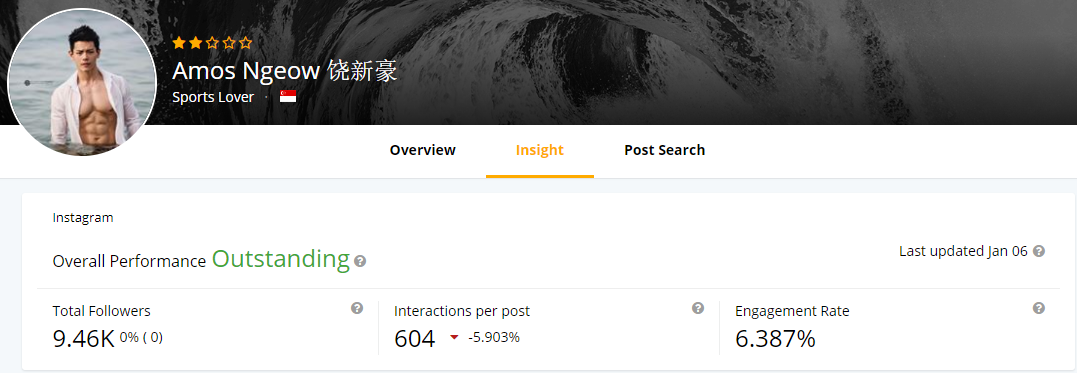Cloudbreakr | Asia’s Media Analytics Company
📧 info@cloudbreakr.com
🌏 https://cloudbreakr.com/ (free registration)

In the olden days, CGI is being used for special effects in films. However, in today’s world, CGI is also being used to create human which looks exactly like a perfect human living in the world of everyone’s dream with a huge number of followers on their social media accounts – they are so-called the “Virtual Influencer”. You don’t even need to be a human in order to be an influencer anymore. The virtual influencer trend has become a new trend in 2020 where it might be a huge threat to every single model out there. More huge brands are actually queuing up to engage with all these virtual influencers for their future influencer marketing campaigns.
Louise Stone, a model who worked for brands like L’Oreal and Adidas is worrying about her future as modeling life is so easy to be replaced and her spot might be replaced by any of the virtual influencers in the future. “To have to compete with literally unreal girls is just really scary – you can shape anything you want and have the exact perfect look without the casting process,” she mentioned.
What are Virtual Influencers?
Virtual influencers are computer-generated humans who have the characteristics, features, and personalities of humans. They looked so real and it is hard to differentiate whether they are real or animated. Virtual influencers are mainly created for reaching out to the younger population. The audiences of virtual influencers are mostly between the ages of 18 to 24 years old.

At the end of the day, virtual influencers aren’t experiencing the product or attending the real event. They have graphic designers to do the job for them and post it on their social media account. But, the engagement rate of virtual influencers can be three times higher than a real influencer. “Not only does the streamlining allow virtual influencers to adapt, the pace of content creation also allows them to keep up with real-time data, which means they can fit into any type of programmatic or dynamic content process,” mentioned by the CEO of UM Studios and Ensemble Worldwide, Amit Sutha.
4 Virtual Influencers That You Should Check It Out
1. Shudu.gram
Shudu claimed herself to be the world’s first digital supermodel which is generated by Cameron-James Wilson, a photographer, and digital artist. The inspiration for creating Shudu came from the South African princess Barbie doll as he sees a lack of diversity in the modeling world and Shudu successfully inspired all the dark-skinned models out there. With her realistic features, it took quite a while for people to realize Shudu’s real identity. Wilson claimed that Shudu is not trying to replace anyone. However, it is trying to add a new kind of movement out there.
2. @lilmiquela
Miquela Sousa, known as Lil Miquela on Instagram is a 19 years old Brazilian-American computer-generated model, musical artist and influencer who has over a million followers on Instagram. Lil Miquela isn’t a fully AI creation as she is created by motion graphics but her success has inspired Betaworks (a venture capitalist) to invest in virtual creators. Lil Miquela often shares her opinions on transgender rights, feminism and the Black Lives Matter movement on her Instagram. As a musician, she also released several singles and has around 131K subscribers on her YouTube channel.
3. Imma.gram
Imma is a virtual influencer who is interested in Japanese culture and known for her cool and street style photos. Her hyper-realistic face and bright pink colour hair made her stand out from the crowd. Due to her unique feature, brands like Puma, Valentino, and Dior urge to work with her. Imma’s face is worked by female engineers from ModelingCafe as they think women who wear makeup are definitely able to understand the whole detail of makeup. They have worked on every single detail to the finest from her facial expressions, makeup and to the hair and compared to other virtual influencers, she has the most realistic look. Aside from that, every image of Imma is created by transposing her 3D animated head onto a live-action body and background. Despite this, it is hard for us to know whether she is a real human or computer-generated human from the start.
4. @mayaaa.gram
Maya is the first virtual influencer in Southeast Asia. She is not afraid to let people know that she is actually computer-generated. Her first post on Instagram was a “Loading” message flashing on a computer screen without any caption and it successfully created curiosity among the public. Without any hiding, Maya shared her whole body render process with the public on Instagram and allowed them to be part of her journey. In conjunction with Puma’s new launch on PUMA Rider campaign, they collaborated with Maya on this and she is now one of the ambassadors of PUMA SEA. “We’ve had to change the way that we get messages to consumers. I would say that we have to be less about the message, and more about general behavior. We need to appeal to our consumer in a different way because at the end of the day saying “hi, please buy my shoe” doesn’t work.” said Adam Petrick, Global Director of Brand and Marketing at PUMA.
